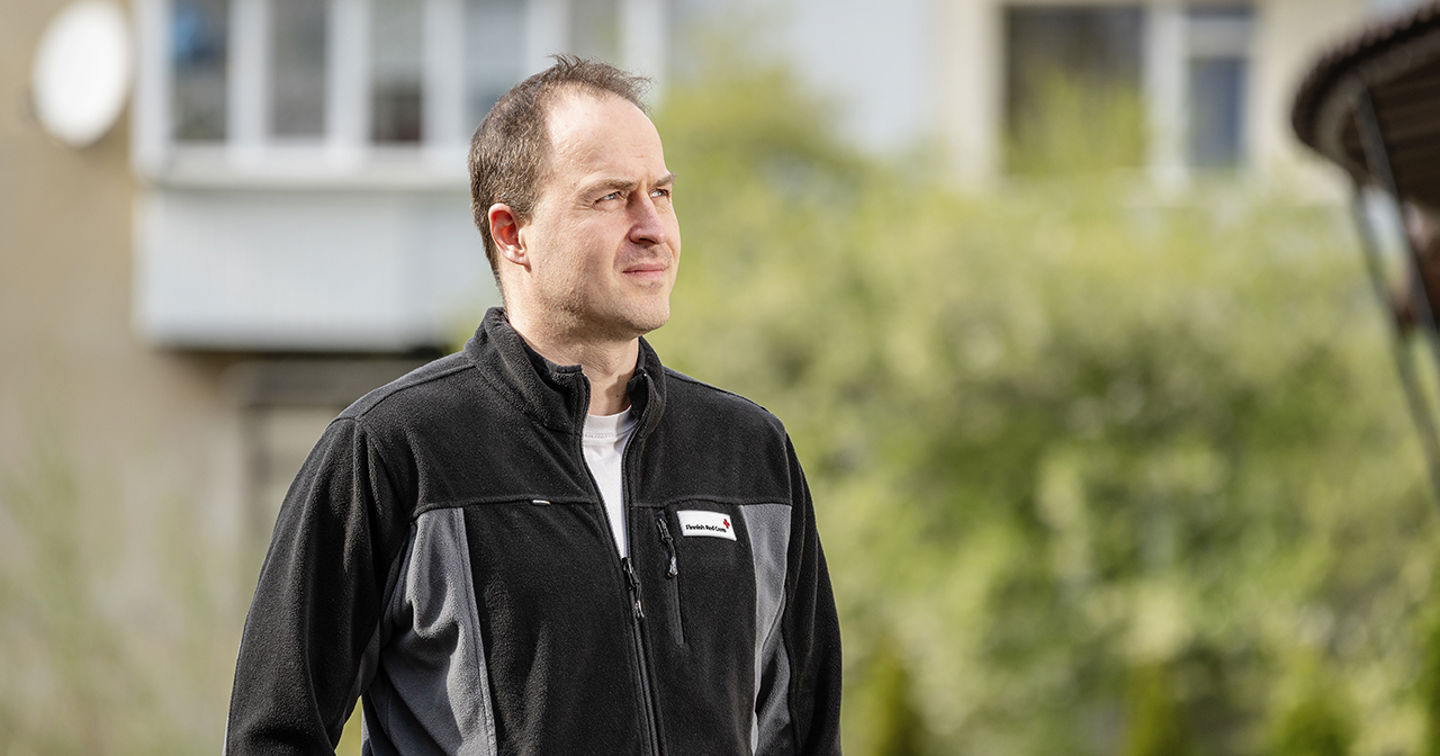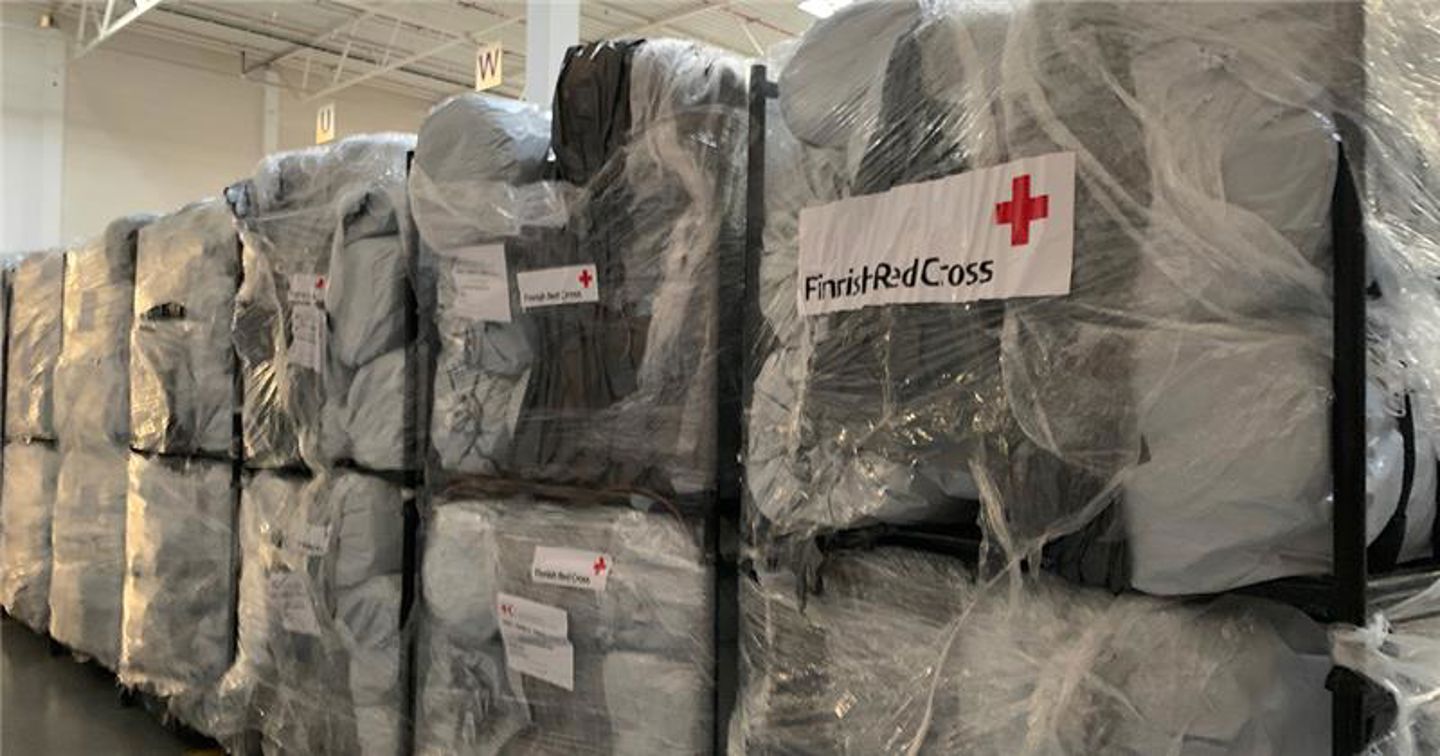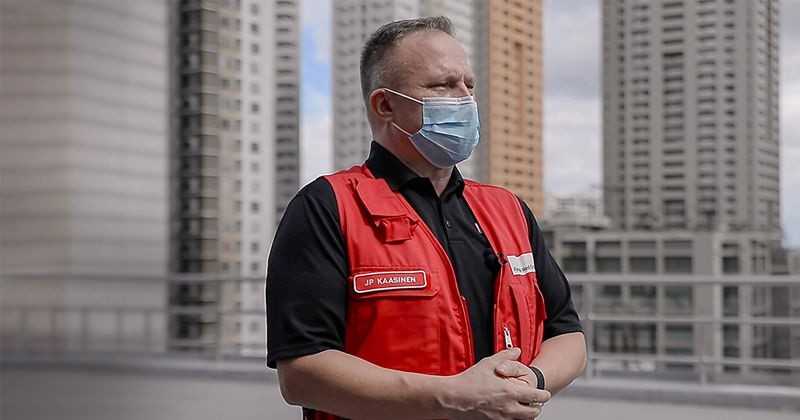“Nevertheless, life goes on”

In spring 2022, Ari Seppälä witnessed up close the incredible crisis resilience in people.
Finnish Red Cross aid workers are professionals in their fields, providing help in crises and disasters around the world. They are sent on various aid assignments using the funds collected in the Finnish Red Cross Disaster Relief Fund.
One of these aid workers is Ari Seppälä, who worked in the aid operation in Ukraine in spring 2022. As an aid worker, Seppälä has witnessed up close the incredible crisis resilience in people.
“In crises such as this, be it a man-made or natural disaster, it is always wonderful to see how life goes on nevertheless, even when a great deal is lost at once: normal jobs, homes, schools and hobbies.”
During his mission in the spring, Seppälä met many local employees who had come to the western parts of the country from eastern Ukraine. They worked in the Red Cross aid operation e.g. as drivers or interpreters.
“Often, their wives and children had gone abroad, and the employees expressed how happy they were that their children had made new friends and been able to go to school. Such a sense of hope remains,” Seppälä describes his discussions with local employees.
Field experience provides confidence to go to a crisis area
Seppälä did not have to think hard about going to Ukraine this spring. He has already gained experience from several Red Cross aid operations e.g. in Dubai, Tajikistan, Zimbabwe and Iraq.
“ I have been to many places before. Of course you hear news about all sorts of things that have happened or are going on there [in Ukraine], but I did not think it would be any more challenging, complex or unsafe than anything else I have been involved in previously,” Seppälä says at home in Sodankylä.
“Perhaps some members of my family, my father or mother, were a bit worried, but I was not.”
You could have an easier working environment of course.
Seppälä has a practical overall approach to aid work in crises and disasters. He describes his attitude as being that of an engineer.
“You could have an easier working environment of course, but I still view this as work, which is how it should be,” Seppälä states with a voice of experience.
“But of course you must be motivated in other ways as well.”
Logisticians ensure material aid reaches those in need
Seppälä is a logistics professional. In the Ukraine aid operation, he was a member of a team of nine logisticians working in the cities of Lviv in Ukraine and Lublin in Poland. He worked as a team leader in both countries.
In any aid operation, the logistician’s task is to ensure that aid supplies reach their destination, e.g. by organising transports and distribution.
“In Poland, we managed a fairly good-sized warehouse and organised transports from there to those in need of aid. As a team leader, I delegated tasks within my team. One important thing is to coordinate your actions with other operators. Reporting is also important.”
Semitrailers packed with aid supplies were sent from the Lublin warehouse to different parts of Ukraine and the Polish border. At their destinations, the distribution was carried out by the local Red Cross organisations most familiar with the local conditions and needs.
“The Polish Red Cross and Ukrainian Red Cross play a big part in arranging distributions. These [aid supplies] are generally transported to the distribution points based on their needs.”

Ukraine operation differs from earlier ones due to its scale
As an aid worker, Seppälä has seen many natural disasters and crises up close. He feels that the aid operation in Ukraine differs a great deal from the operations he has been involved in previously.
“Firstly, the scale of this operation is truly extensive. An enormous number of people have been forced to leave their homes. Secondly, a thing that surprised even me is how large Ukraine is. The distances are long. People crossing the border arrived in different areas: in Moldova, Romania, Hungary, Poland, directly across the Ukrainian border. The area of the operation is massive.”
According to Seppälä, the work in Ukraine also differs from an aid operation after an earthquake or flood in that the event is not over at once: it continues and keeps on developing.
The need for aid in the Ukraine crisis has been immense, and the aim has been to respond to any requests. In the spring, large amounts of material aid was sent from the Red Cross warehouses, e.g. blankets, mattresses, food, drink and pre-packed hygiene packages for families.
“At best, we were able to shift 10–15 truckloads from the warehouses every day. One semitrailer can fit e.g. 2,500 hygiene packages,” Seppälä explains.
Rewarding to meet professionals with different backgrounds
Seppälä feels that each aid operation is different, and you only know what it will be like once you are there. Surprises and solving related problems make aid work interesting.
However, the strongest memories are created from meeting other people.
“The best thing about this logistics disaster preparedness unit is that you are always learning new things working on site with top professionals with different backgrounds. It is truly rewarding,” Seppälä states.

